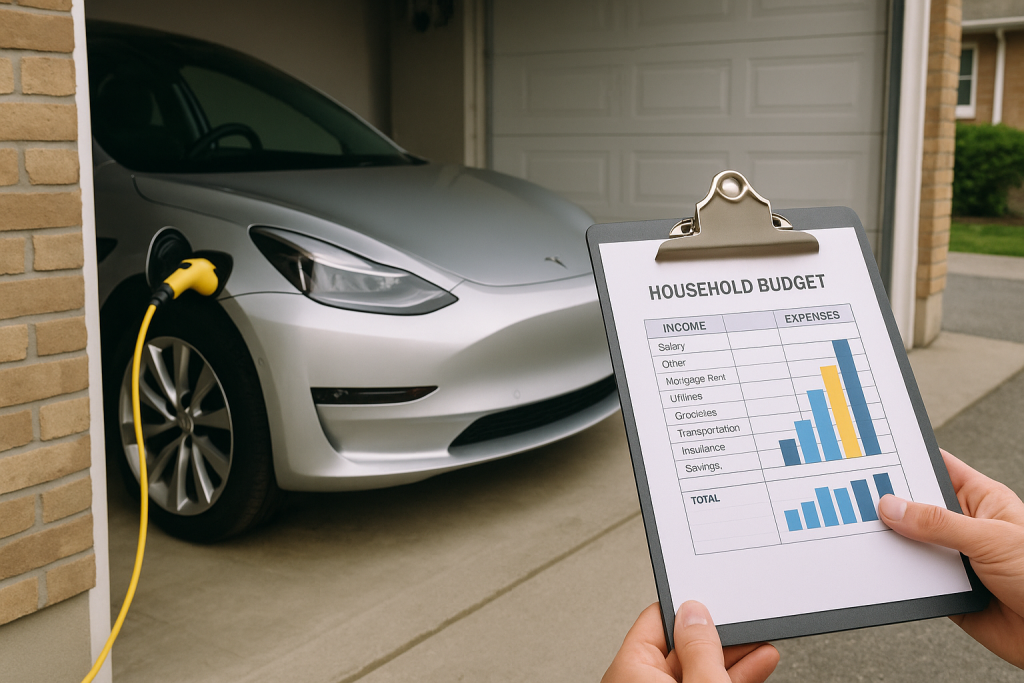Electric vehicles are gaining traction as a viable alternative to traditional cars, offering numerous benefits for both the environment and consumers. The adoption of battery-powered transportation can fundamentally transform a typical family’s financial landscape, with implications for expenses and savings.
In this blog post, we will explore how electric vehicles impact personal finances and the economic environment of households in the United States. The transition to these modern automobiles can lead to substantial financial shifts, offering opportunities for cost savings while demanding a fresh perspective on household budgeting.
Cost benefits of electric vehicles

The financial advantages of electric cars are a compelling reason for their increasing popularity. Unlike gasoline-powered models, they typically have lower operating costs due to decreased fuel expenses and lower maintenance needs. Over the lifetime of such a vehicle, these reductions can lead to significant savings.
Additionally, various government incentives and tax credits make adopting these automobiles even more attractive. Such benefits can offset the initially higher purchase price, ultimately leading to a more economical ownership experience. As more models become available and technology evolves, these cost benefits are likely to grow.
Long-term savings and investment potential
Beyond immediate savings, owning an electric vehicle offers considerable long-term financial advantages. The decrease in fuel and upkeep expenses means more disposable income for a family, which can be channeled into other investments or savings.
Moreover, as the resale market grows, we might see stable or even increasing resale values compared to traditional cars, further enhancing their financial appeal. This stability provides a promising outlook for those considering an investment in this technology.
Economic impact on American households
The shift to electric mobility can also influence broader economic patterns within American homes. As families adapt to these changes, they might experience shifts in their spending habits and budgeting priorities. The investment in electric technology could encourage more environmentally-conscious decisions across other aspects of life.
This economic transformation is also a response to external factors such as rising fuel prices and environmental policies. As these vehicles become mainstream, they hold the potential to redefine what a modern family’s financial framework looks like, promoting sustainability and financial prudence.
Practical tips for maximizing savings
To fully capitalize on the economic advantages offered by electric vehicles, potential owners should research models and brands that best suit their priorities and driving habits. Comparing total ownership costs, not just the sticker price, is essential. Additionally, tapping into federal and state incentives can significantly reduce initial costs.
Moreover, adopting efficient charging habits and strategically planning routes can optimize cost savings. As the charging infrastructure develops, being informed about low-cost or free charging options can further enhance the financial benefits of owning an electric vehicle.
Concluding thoughts on electric transportation
The rise of electric vehicles represents a pivotal shift in both transportation and household finance. While the immediate draw might be the reduction in emissions, the financial gains are equally compelling. As more families embrace this change, they can reap long-term economic benefits while contributing positively to environmental goals.
This burgeoning sector not only challenges traditional notions of vehicle ownership but also demands a reassessment of economic strategies within households. By understanding and leveraging the associated financial benefits, American families can position themselves advantageously in today’s evolving transportation landscape.
